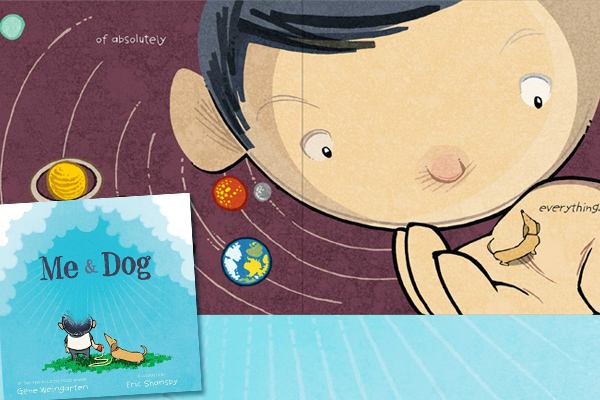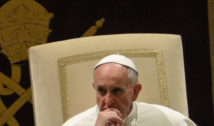
Religious and Atheist Undertones in Children’s Story ‘Me & Dog’ Raises Questions
- By Kyle Glatz --
- 13 Oct 2014 --

In just under 400 words, Weingarten compares the relationship of a pet and his owner to that of a human being and a deity in his new children’s story.
Gene Weingarten has come out with his first children’s book. Like many other children’s books, this one features a small child and his dog. While this may sound like a trite story that has played out many times before, the lesson here is not about friendship or fairness, it is one that explores the nature of religion.
Inspiration
When reading an interview about the author’s inspiration for this story, it sounds almost humorous. In a very relatable moment for any dog owner, Weingarten first conceived Me & Dog after he stepped on his dog’s foot while out for a walk. After he heard the dog’s howls and whines of pain, he felt as though his dog looked at him and asked: What did I do wrong? At that moment Weingarten had the epiphany that he was the equivalent of his dog’s omnipotent deity—its god. He could not placate his dog or explain to it that stepping on his foot was not a punishment, just a natural accident. That is when the concept for the story leapt into Weingarten’s mind.
The Story’s Lesson
The story in Me & Dog, can be summed up when the young boy, Sid, accidentally steps on the tail of his dog, Murphy. Sid sees his friend in pain and the look of betrayal that is in the eyes of his dog, but is not able to explain that there is no cause for the pain that he was feeling other than the simple coincidence of a small step. Sid has an important realization at this point: the dog is not able to comprehend that Sid himself is just a boy, and has merely a casual relationship to Murphy’s pain.
Atheism Or Life Lesson?
In a recent article that was written by Weingarten, he explores two distinct possibilities for the interpretation of the book. He says that it is either a small boy who is apologizing to his dog for a misunderstanding that the dog will not be able to comprehend or a way of introducing kids to the concept that it may be difficult to explain the seemingly inherent unfairness of the world without the pretext of religion. In the story, Sid decides that it is better to let his dog keep believing that the young boy is his master and in many ways his “god”. After all, why worry the dog when it has such a grasp on the world. While you will not have to dig deep to find the religious undertones in this story, it is something that will capture parents’ attention, and maybe make them rethink the way that they raise their children.


















